#Kappabashi Kitchen Street
Explore tagged Tumblr posts
Text
Exploring Kappabashi Kitchen Street: Tokyo's Culinary
In this post , you will visit with me Kappabashi Kitchen Street. Check out my japanese products [here]. What is Kappabashi Kitchen Street? Nestled between Ueno and Asakusa in Tokyo, Kappabashi Kitchen Street, also known as Kappabashi Dōgugai, is a culinary haven renowned for its extensive range of kitchenware. This bustling street, often referred to as “Kitchen Town,” has evolved from a niche…
#Best shops in Tokyo#Culinary shopping Japan#Japanese ceramics#Japanese knives#Kappabashi guide#Kappabashi Kitchen Street#Kitchenware Tokyo#Plastic food models#Sensoji Temple#Tokyo shopping guide#Tokyo street shopping#Tokyo travel tips#Traditional Japanese cookware
0 notes
Text



A golden kappa statue with a tile depiction of the same creature stands in Kappabashi Dori-Tokyo, Japan.
#folklore#folk horror#japan folklore#japanese#japanese folklore#japanese yokai#yokai#yurei#ghost#goblin#tokyo#kappabashi#kitchen town#statue#golden#street photography#folkart#street art#travel#travel photography#myth#legend
78 notes
·
View notes
Text
Shopping with Kento

A happy little shopping trip with your dear husband and some suggestive banter.

Walking along the covered sidewalk, you and Kento peek into stores and eye up the products. Stores filled with chopsticks, kitchen apparel, knives, plates, industrial-sized cooking vessels.
Ah, this looks promising! Pulling your husband into a cramped and densely-packed store filled with long, tall shelves filled with all manner of kitchen utensils and wares.
Quickly losing Kento as you slipped past patrons, you are caught up examining a collection of chopstick rests. You reach for a pair of adorable dinosaurs, a wooden triceratops and a coordinating brachiosaurus.
SLAP
A surprise slap hits your ass and you let out a muffled moan, dropping the mini dinosaurs as you clasp a hand on your mouth. Furiously looking around, you snap your head and spot Kento with a small smirk on his face.
“May I help you?” you ask, feeling a warm flush through your ears.
“Just testing out the wares,” he looks over your shoulder at the dinosaurs. “I’d like to get a new spatula and multi-taksers are a far superior choice.”
“Multi-tasking?”
“Those are adorable, pick out two you like. I’m going to look downstairs.”
Kento turns on his heel and walks off. You’re left in a haze and confusion. While you’re no stranger to cooking up new fun in the kitchen, you’ve kept kitchenware out of the equation thus far.
Grabbing the dinosaurs and heading downstairs, you spot Kento looking at a lovely collection of white and blue plates.
“Wouldn’t I make a better plate than that?” You stand up on your tippy toes and whisper in his ear.
“Don’t tempt me,” he takes a deep breath and slowly, deliberately, gently places the plate in his hands back on the stack.
You stand back down on your heels, hands running down Kento’s wide back and tracing the edges of his harness. Feeling the tense muscles around the soft leather, your mind wanders to what his back would look like wrapped in just the straps of an apron. Surveying the shelves nearby, you spot a rack filled with a rainbow of apron choices.
“What do you think?” you hold up a frilly green and orange affair. Kento starts to make his way over to you.
“If that’s what you want,” he gives in his most non-committal tone, nose wrinkled.
“Hm, how about this one?” you hold up a yellow and black patterned option.
“It’s a bit full-coverage, don’t you think?”
“Who do you think I’m shopping for?” you tilt your head as you hold it up to his chest for a quick guauge of sizing. Pleased with your choice, you sling it over your arm and start walking off to the register, happy with the items you’ve chosen.
Back outside, your purchases on one arm, the other wrapped around Kento’s arm as you continue wallking down the crowded streets in Kappabashi. Falling into a lock-step together, you can smell a light whiff of his gentle cologne. One of your favorite scents. You steal a glance upward at his stong jaw, unable to see exacltly where his eyes were pointed due to the dark lenses of his glasses.
“Let’s cross here, I think Kama Asa is just over there,” Kento points at a shop a bit further down the road.
“We can stop in every shop if that’s what you want, love,” you squeeze his arm as you both come to a stop at the crosswalk waiting for the light to change.
Entering the store, you see a few neat tables of shiny pots and pans. Fry pans and woks of varying sizes, shiny sauce pan…bowls? Why are they missing handles? You slip over to the display to inspect the wares and figure out how you would use a saucepan without a handle.
Meanwhile, your husband is standing at a long display of frying pans, eyeing up one with a dark sheen and a long handle. He’s speaking with a store worker who slips away after giving Kento a quick bow. He makes his way over to you, placing a small kiss on your temple.
“I found a great frying pan, it’ll arrive in two months. Hand-made in Kanagawa prefecture,” Kento is giddy as he explains the details of his new pan to you. While you enjoy cooking, Kento loves it and is the primary chef in the house. He not-so-secretly loves looking for new kitchen hardware, trying to find the elusive perfect utensils and tools.
“Yeah? And then what?” you wink and bite your lip lightly.
“I-what? And then I season it and make you fried eggs. What is going through your head?”
Your smile starts to fall and a light blush washes over your face. But then you hear a warm chuckle from your husband as he places his hand on your lower back.
“I’m not going to turn a frying pan into something sexual, unless you’re really into that old Atari game,” he continues at a whisper, mostly to himself. “Besides, I think it would hurt, and not in a pleasurable way, first and foremost.”
You shake your head as you get back to examining the handle-less pots.
“Well that’s clever. Using a speculum to grip a pot,” Kento reaches out to a metal gadget you were staring at.
“Excuse me?” you’re incredulous the word speculum just fell from Kento’s mouth. Sure, he’d knowledgeable about anything you’ve ever asked him of, and this entire outing has been nothing but hornily-charged banter and innuendo. But speculum?
“Surely you see it. Are you into doc-ow!” you cut off your husband with a light jab to the side and an exasperated sigh. The sigh is mostly filled with the contentment that he’d never say this around yours or his friends. Content that he can open himself with you to let all the weir
“Not at all! Let’s get on to the next place, I’m starting to get hungry.”
Back out on the street, you both slip into a shop dedicated to all things coffee gear. And you walk out with the receipt for a new syphon brewer to be shipped directly to your house.
You attempt a poorly-constructed joke about syphoning Kento however it falls flat. But the laughs still flow.
"An admirable attempt, but next time I'll just take a sip of your sweet nectar," and again, your husband causes you to gasp on lost words, feeling a twinge of arousal grow.
Kento rounds the corner and spots the shop he’s been looking for during this entire excursion. A knife shop to get his heirloom cleaver cleaned and inspected. He carefully pulls it from his bag in a protective case and box. The shop owner immediately recognizes the age and craftsmanship and he promises to treat it carefully. He asks you both to return in three hours.
“Let’s get lunch while we wait. What are you in the mood for?” Kento asks as you exit the shop.
You steer the two of you into the nearest hourly hotel.
“Kento, which bag has the spatula?”
Suddenly lunch can wait.
#jen の stories#nanami kento#nanami x reader#nanami kento x reader#nanami x you#nanami kento x you#nanami fluff#jjk#jujutsu kaisen#jjk fluff#jujutsu kaisen fluff#suggestive kento#suggestive nanami#suggestive nanami kento#inappropriate use of kitchen gadgets
188 notes
·
View notes
Text
10 top markets to blend in like a local in Tokyo
Tokyo, a city brimming with energy and culture, is home to some of the most fascinating markets in the world. From traditional Japanese goods to delicious street food, these markets offer a sensory experience like no other. Whether you’re looking to taste authentic flavors, shop for unique souvenirs, or simply soak in the lively atmosphere, Tokyo’s markets have something for everyone.
Here’s a guide to the best markets for your Tokyo travel and what makes them special.
Tsukiji Outer Market
Renowned as the heart of Tokyo’s seafood trade, the Tsukiji Outer Market is a must-visit for food lovers. While the inner wholesale market has relocated to Toyosu, the outer market still thrives with vendors selling fresh seafood, sushi, and traditional Japanese snacks. Don’t miss out on trying the melt-in-your-mouth tuna sashimi or tamagoyaki (sweet rolled omelet) freshly prepared in front of you.
Ameya-Yokocho (Ameyoko Market)
Nestled in Ueno, Ameyoko is a bustling street market offering a mix of food, clothing, and bargain goods. Stroll through its vibrant alleys and try grilled seafood skewers, takoyaki (octopus balls), or Japanese sweets like taiyaki (fish-shaped cakes filled with red bean paste). With its energetic vibe and affordable prices, it’s perfect for an authentic street food experience.
Nakamise Shopping Street
Located at the entrance of Senso-ji Temple in Asakusa, Nakamise Shopping Street is one of Tokyo’s oldest markets. Lined with stalls selling traditional snacks and souvenirs, it’s a great place to try senbei (rice crackers), ningyo-yaki (small sponge cakes filled with red bean paste), and matcha-flavored treats. It’s also the perfect spot to pick up kimonos, paper fans, and other cultural mementos.
Toyosu Market
As the successor to the famous Tsukiji Market, Toyosu Market is now Tokyo’s primary seafood hub. While primarily catering to wholesalers, visitors can enjoy a behind-the-scenes view of the tuna auctions and indulge in some of the city’s freshest sushi at the on-site restaurants. For seafood enthusiasts, this market is a fascinating and flavorful experience.
Kappabashi Kitchen Town
Known as a haven for cooking enthusiasts, Kappabashi is the go-to market for all things kitchen-related. From handcrafted knives and traditional tea sets to realistic food replicas, this market has it all. It’s also a great place to shop for high-quality chopsticks and ceramics, making it a paradise for culinary lovers and gift shoppers alike.
Oedo Antique Market
If you’re looking for something vintage, the Oedo Antique Market is the place to be. Held twice a month at various locations, this market is a treasure trove of traditional Japanese antiques, including ceramics, textiles, and rare collectibles. Whether you’re a collector or simply enjoy browsing, this market offers a charming glimpse into Japan’s past.
Shimokitazawa Vintage Market
Shimokitazawa, Tokyo’s bohemian neighborhood, is famous for its quirky vibe and vintage shops. The local markets here are a haven for fashion enthusiasts, offering an eclectic mix of secondhand clothing, accessories, and retro items. Pair your shopping with a cup of artisan coffee from one of the area’s cozy cafes for a laid-back experience.
Tsukishima Monja Street
Tsukishima Monja Street isn’t a traditional market but a food street dedicated to monjayaki, a savory pancake dish unique to Tokyo. With over 70 restaurants offering their own twist on the dish, it’s the ultimate destination for foodies looking to try this lesser-known specialty.
Harajuku Takeshita Street
Known as the epicenter of youth culture, Takeshita Street in Harajuku is a vibrant market street lined with trendy shops and unique snacks. Indulge in colorful crepes, rainbow cotton candy, and quirky treats while browsing for fashion accessories and souvenirs. Its lively atmosphere makes it a favorite among visitors and locals alike.
Akihabara Radio Kaikan
While not a traditional market, Akihabara’s Radio Kaikan is a paradise for anime, manga, and tech enthusiasts. It’s a multi-story shopping complex packed with collectibles, gadgets, and otaku culture. Dive into the world of Japanese pop culture and pick up unique souvenirs that reflect Tokyo’s modern vibrancy.
1 note
·
View note
Text










Japan Day 4 (September 9, 2024)
We had another lovely day in Japan today! The weather has continued to be very hot and humid. We instantly feel gross and are sweating within minutes of being outside. It’s making getting cute and taking fun pictures challenging. This morning we enjoyed another lovely buffet breakfast at the hotel before heading out to explore more of Tokyo. We took the subway over to the most popular temple in Tokyo called Senso-Ji temple. is this beautiful temple complex. There are a bunch of little stalls and stores leading up to the temple. So we spent a while meandering through the stalls, looking at the little knickknacks that were being sold and snacks. We made our way up to the actual temple, and there were some beautiful gates and a pagoda style building. You can also buy incense and incense smoke, which is supposed to bring good health. There is also a tradition of fortunes at this temple as well. What you do is you go up to one of these booths and you shake a metal box full of sticks. Then you tip the box over to let a stick come out. Then you look at what number is on the stick and then you go and pull the fortune from the number door that matches the number that’s on the stick. Then you may see if you have a good fortune or bad fortune. If you have a good fortune, then you get to bring it home with you. If it’s a bad fortune, then you were supposed to tie it up in a tree and leave it behind. Both Liz and I got good fortunes. We then walked into the temple, which was very ornate and we paid our respects. We then did more walking around the nearby street, which was also filled with a lot of vendors. This is the main area of the Asakusa neighborhood. We stopped to get some cold drinks out of a vending machine. We also stopped to get a snack which consisted of very fresh strawberries stick with a hard sugar coating. They call this strawberry candy. It was very delicious and hit the spot as we were totally sweating.
After a lot of meandering, we decided to make our way to Kappabashi Street. This street is well known to be a kitchen tools street. So both sides of the street are lined with store after store all carrying various types of goods that you would need in the kitchen or in a restaurant kitchen. We went through loads of stores that were selling ceramics and knives and appliances, and any sort of kitchen tool that you might dream of. I purchased a ceramic canister for my kitchen to put some looseleaf tea and I’m really excited about. I also found pans that were the same size as my family’s potica pans and I purchased two of those to bring back to the US. We then spent some time in a knife shop. We got to learn all about the different types of Japanese knives. Then I purchased a couple of nice knives and they did free engraving, which was a lot of fun and we got to watch that process.
After we spent a while on kappabashi Street, we decided to take transit over to Asahi brewery. This is one of the major breweries in Japan. We decided to enjoy the air-conditioning, I got a beer, and we enjoyed some lunch. Also, by the way food in Japan is so cheap! Basically every meal that we have had has been $10 or under per person at the brewery was no exception. We got a pizza, edamame, a beer, and a soda for all under $20. after this late lunch, we took transit back to the hotel to drop off my loot. We also took a couple minutes break his again. It was very hot and humid and we had been doing a lot of walking so our feet were tired. Taking a short break to go to TeamLab Borderless. It’s the same company that put on the art museum that we went to on the first day. But this is a newer exhibit in a different part of Tokyo. We enjoyed the first museum so much that we decided to go and check this newer version out as well. The whole museum is a digital art, museum, different types of rooms and projected art. One of the rooms, we were able to draw our own fish and they scanned the fish into digital art and projected it on a wall in the next room. Both Liz and I drew turtles. And then we got to watch our sea turtles swim around in the next room. It was very cool. And definitely different experience than the other location. We’re glad that we did both. I think that we both agreed that we liked the other location better. This museum was located in the middle of a mall. So afterwards we just grabbed a bite to eat at a Ramen shop nearby. We decided to head back to the hotel pack up some of our stuff and get ready for bed. Tomorrow we are checking out of this hotel and taking a bus to the small town of Fujiyoshida, which is located just outside of Mount Fuji. we are both looking forward to a relaxing couple of days with less walking. And also hopefully more comfortable beds. We are also very excited to get out of the big city and a smaller town and subsequently head to Kyoto, which is more historical and has more cultural sites.
0 notes
Text
Exploring Kappabashi Kitchen Street: Tokyo’s Culinary
1 note
·
View note
Text
October 21 -26 - In Tokyo we stayed at the Tokyo Palace Hotel, close to Tokyo Station. Our room overlooked the water and gardens of the Imperial Palace and the vast skyline of Tokyo. Tokyo is an overwhelmingly dense city of buildings and people. Moving around the city requires using the subway system with stations that are busy, large and can be a little complex.
During our stay we took a group goyza and ramen cooking class that was informative, fun and finished with a delicious meal. After class we walked the Kappabashi area that has every imaginable kind of kitchen, cooking and even a chopstick store.
We took a three-hour architectural walking tour of the Omote-Sando, an area where many Japanese architects have designed stores for well-known brands of personal and clothing items. The area is pedestrian friendly with many small streets to stroll and enjoy.
We went to two special museums, the What Museum that houses over 600 architectural models that were used for conceptual designs for proposed buildings. The second museum was the Hara Model Railway Museum with over 1,000 model train cars, and more than 6,000 model railway items. There is information how trains developed, constructed and operate. A special treat is the large operating train layout that is a replica of an actual town that is fascinating to observe. The founder spent a lifetime of research, travel and engineering in order to purchase and reconstruct the trains.
Tokyo is a city to meander and take-in the urban landscape of architecture, stores, people and food. We spent much of our time walking, navigating the subway system and enjoying being immersed in the city. Tokyo and the Palace Hotel are memorable of our time in Japan.
We are flying home on Friday October 27 where we leave Tokyo at 5:00 p.m. and arrive in Los Angeles on Friday October 27 at 10:50 a.m.
0 notes
Text
Professional restaurant owners and chefs often visit this prestigious place to stock up on all kinds of kitchen utensils, equipment and more. Also known as Kappabashi Street, this shopping center is located between Asakusa and Ueno.
1 note
·
View note
Photo

#shitamachi tanabata#tanabata#festival#asakusa#kappabashi#ueno#tokyo#japan#tanabata festival#shitamachi tanabata festival#asakusa kitchen town#street festival#food festival#food market#street market#tokyo festival#japan festival#asia#east asia#street photography#urban photography#city#crowd#people#film#film photography#colour#fujifilm#olympus om2#35mm
2 notes
·
View notes
Text
Tokyo Mew Mew & Mythology - Kappa Chimera Anima
(Most of this info comes from my analysis of the Sarazanmai anime and JP mythology books)
Kappas
The kappa's reputation has changed over the years to something more like a cuddly mascot, but originally they were described as fearsome man-eaters. A kappa is believed to be approximately 4 meters tall with a monkey-like build, greenish skin, a toothed beak, membranous hands and feet, a soft shell on its back, and a bald sara on its head. They wander into wet environments such as rivers, ponds and lakes to eat human flesh and animals that pass too close to the water's edge.
In the old days the Kappa was a being to be feared by those who found themselves confronted by the creature on the riverbank.

Tokyo Mew Mew Epsode 8 Chimera Anima is based on a Kappa
Kappa’s weak spots

The human mask on the chimera anime represents its Sara
Sara can mean plate, which in original Kappa illustrations does look like a plate
Sara - humans can bow in greetings and the kappa would respond in the same way, pouring the water off his head which would weaken him.
Another option is to distract the kappa with a cucumber, its favorite food
Or simply fart a huge, smelly fart on top of the monster. (That's why the episode has so many fart jokes)

Of course there are some other things that kappa like to eat, and one is the central part of Sarazanmai: shirikodama.
Shirikodama
It is said to be the mythical human organ that exists in the rectum, and is the youkai's favorite food.
The origin of the organ is sometimes considered a metaphor for the human soul, or more simply a legend created after several bodies of drowned victims were found with distended anuses.
Shirikodama is also said to block access to the liver, which is another delicacy for kappa.

If the mews were defeated they would have their livers stolen if this went by the true yokai route
Otters

The word kawauso is synonymous with the word for real otters, but the archetypal yokai that share that name are playful shapeshifter like kitsune. They usually disguise themselves as women or children and even wear clothes, but only answer human questions with nonsense. In some tales, the kawauso takes on siren-like qualities to lure men or children to their deaths and eat them.
Some regions speak of kawauso appearing as imposing monks or possessing humans to drain their energy. Other areas link kawauso to kappa as cousins, and supposedly enjoy a good glass of sake together.

Guess who was best friend with an otter during his childhood years? clone aoyama.... the reason he transforms into a Kappa Chimera Anime is very clever.
What is "Sarazanmai?" (short version at the end)

The word Sarazanmai functions on several levels to connect the emotional core of the series with three central characters, the setting,the kappa yokai and the mews.
Sara, by itself, typically refers to a dish and can also be used as a person's name, such as the idol Sara Azuma in Sarazanmai. The interpretation of the plate is the most interesting, because "sara" is also the term used to describe the top of a kappa's head. The yokai is believed to have an indentation, like a plate, that contains water. As long as water remains in the kappa's sara, he can leave his watery home and walk around. But if his sara dries up, the kappa is weakened and may even die.
The Tokyo district has many places to attract tourists, but one in particular is the kitsa street Kappabashi-dori, also translated as "Kitchen City." Its name is a pun, as it is home to both kappa statues and dishwashers. Many restaurants in Tokyo get their supplies from businesses (including dishes!)
Sara is also a loanword taken from the "wage" of the English world. -zanmai as a suffix refers to indulgence. It is the act of being so wrapped up in something that you lose sight of anything else.
21 notes
·
View notes
Photo

The street depicted here is Kappabashi Dogugai (かっぱ橋道具街), aka Kappabashi Utensil Street according to Google Map’s translation. Stores in this neighborhood sell kitchen equipment and paper supplies to the city’s restaurants (Trip Advisor). Kappabashi Dogugai is located between Ueno and Asakusa. It is more famous for the specialised stores that sell plastic and wax food samples used by the restaurants.
3 notes
·
View notes
Text
Random facts about Japan
Vending machine ratio. To every person there is approximately 23 vending machines. You can get anything in a vending machine including cars, lettuce, hot ramen, and eggs.
Gambling is illegal. There are no gambling stations in Japan however there is one game called pachinko which isn't illegal because it is a popular game and is disguised, in the game the payer buys tiny meatballs which are slotted into the machine. the balled that win are exchanged for prizes or tokens which can be exchanged for money.
Fake Food. Outside of most restaurants, you will find fake replicas of the food that the restaurant serves! You may also find ones that move! Yes, animated food – only in Japan.There is a street which is unofficially known as kitchen street, but the formal name is Kappabashi Street. It’s located between Asakusa and Ueno. This is where restaurants purchase their kitchenware and fake food! It’s a street lined with shops selling beautiful Japanese kitchenware, from hand-painted bowls to every kitchen gadget you could think of, it’s a kitchen-lovers dream!
Japan has the third-highest life expectancy in the world. Japanese have the highest life expectancy in the world due to their diet and lifestyle. They are very healthy people and exercise regularly.On average men will live until their 81 years old and women 87 years old. This is causing a crisis in Japan because there’s a lack of childbirth also. Now there are more seniors than children and this is causing a problem for the Japanese economy.Apparently, Japan sells more adult diapers than children’s
There are over 6800 islands.
Oldest people in the world. One of the most beautiful islands that mirror paradise is called Okinawa. On this island are the two oldest people in the world (116 & 117 years old)!
Honshu is one of the four main islands and where Tokyo is located. The other 3 main islands are called Hokkaido, Shikoku and Kyushu.
Slurping your noodles is not considered rude. It’s considered polite to make slurping noises and means that you’re enjoying the food and you appreciate it.
Japan eat the most seafood in the world. The Japanese eat over 17 million tonnes of fish per year. The Japanese are the largest importer of seafood.You will seafood as a staple food for the Japanese and included in most meals. Over 20% of their protein is from seafood!
You’re allowed to take naps on the job. Yes, that right! In fact, naps are encouraged on the job because this improves workflow and speed.It’s also considered a sign that you are dedicated to your job and have worked hard and long for your job!
They eat KFC for Christmas dinner. Apparently, over 3.6 million people in Japan celebrate their Christmas with a KFC dinner.So how did this come about in the first place? Well, it was just a good marketing campaign when the first store opened in 1970. KFC started a ‘Party Barrell’ based on an American Christmas dinner but with chicken of course instead of turkey. Somehow it caught on and the rest is history.Christmas is not considered a big event as less than 2% of Japan is Christian.
Tokyo is the most densely populated city in the world. Around 38 million of Japans population live just in Tokyo. Japan has a population of 127 million, so that’s a lot of people in a small space!You can see how busy Tokyo is during rush-hour easily by trying to hop on a train within the city or walking the busiest crossing in the world – Shibuya.
One of the safest countries in the world. Japan’s crime rate is so low is basically non-existent. The Japanese are very honest people, reliable and law-abiding.The Japanese law is strict, so people tend to not go off the rails and on the wrong side of the law.
Don’t wear your shoes inside. Before entering a house, you will be asked to take off your shoes. You will be given a pair of slippers usually. It’s considered rude to wear your shoes inside.This Japanese custom was mainly a thing because back in the days the Japanese used to eat off the floor and obviously didn’t want dirty shoes ruining where they were about to eat.
They have a high suicide rate. Unfortunately, Japan has one of the highest suicide rates in the world. Last year Japan youth suicide’s hit a record high in 30 years.The suicide forest is the second most popular place to commit suicide after San Francisco golden gate bridge. The forest is located at the base of Mt Fuji and is said to where most people enter and never come back.The rate of suicide is due to not enough access to therapists as well as work pressures. Japan has announced that they are working on better programs, especially in schools to help cut the rate of suicide.
The toilets sing for you. This is probably the weirdest thing about Japan, the toilets! They do just about anything, even sing.You can also press a button and the seat will warm up, so your bottom doesn’t get cold!
Square melons are a thing. There is such a thing as square watermelons! Apparently, they are grown like this for decoration and cost as much as $100!
They have a penis festival. The Kanamara Matsuri festival is held every year. It started in 1969 just outside of Tokyo and celebrates the penis and female fertility!
Eating raw meat is common. You will notice on your trip to Japan that eating various types of meat raw is totally the norm. Raw fish is commonly found in sushi. Homemade sushi tastes best and you’re lucky if you can find a guesthouse with a welcoming host to serve you local food.One of the delicacies in Japan is raw horsemeat. It’s called Bashari and is thinly sliced and eaten raw.
No 4’s please! It is common in Japanese culture to totally avoid the number four because the word sounds the same as the word death. Buildings will commonly not have the 4th floor, cutlery is sold in sets of 3 or 4 and the number of guests invited to a tea ceremony will never be 4!
The Japanese are some of the friendliest in the world.This is a cold hard fact! The Japanese are awesome, to say the least. They are incredibly friendly, gentle and conscious people.
Fruit is the best gift you can give. If you don’t know what to get your host, then gift them fruit. You will notice the price of fruit is astronomically high.There’s a fruit gifting shop in Tokyo and fruit can be as expensive as $27,000!
The face mask is used by the sick. When I first visited Japan, I thought the face mask was worn because people don’t want to get sick and wanted to avoid other people’s germs. But, it’s actually the other way around.If you are sick you wear the face mask, so you don’t get others sick. Again, this shows how nice the Japanese are! Always thinking of others!
You can rent a cuddle. Yes, you read that right. There are businesses where you can go in and pay for a cuddle. Turns out people are lonely and just want a good old-fashioned hug sometimes.
Maid café. In Japan, there are maid cafes where the staff dress up in maid costumes and treat you as their master. Now, you may be thinking that it sounds sexual, well it’s not meant to be that way at all. It’s just a café where the staff are dressed in cosplay.The cafe is strange, fun but maybe a little cringy all at the same time. It’s just basically a café where everyone dresses up!
About 1500 earthquakes a year. Tokyo lies on an active area where earthquakes are extremely common, and they have over 1500 of them a year. But really this is nothing for me because New Zealand has over 15,000 per year.
They take cleaning seriously. Cleaning is taught in school and is a serious part of Japanese culture. Students and children clean their own school!

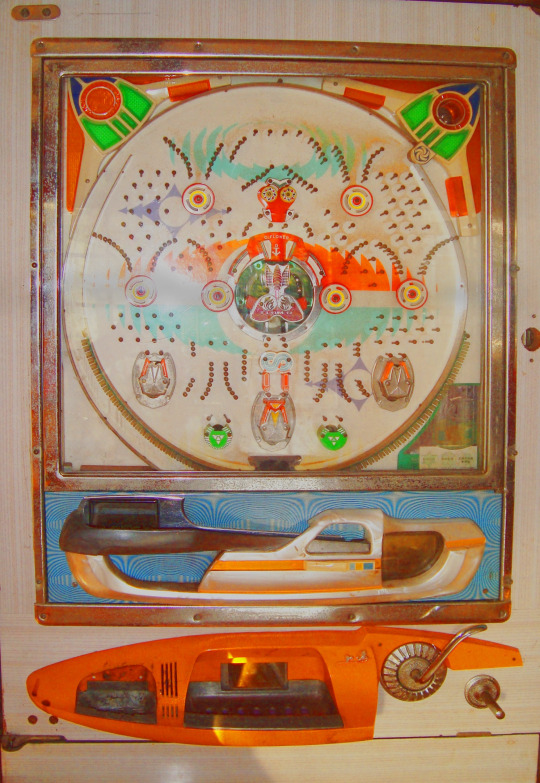
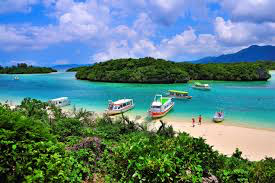

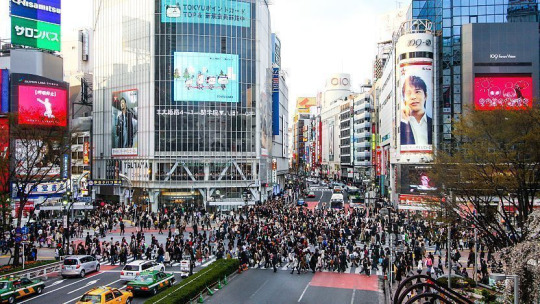
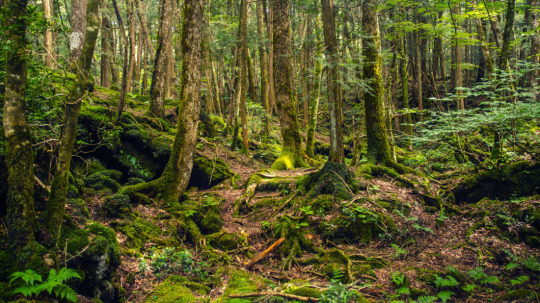
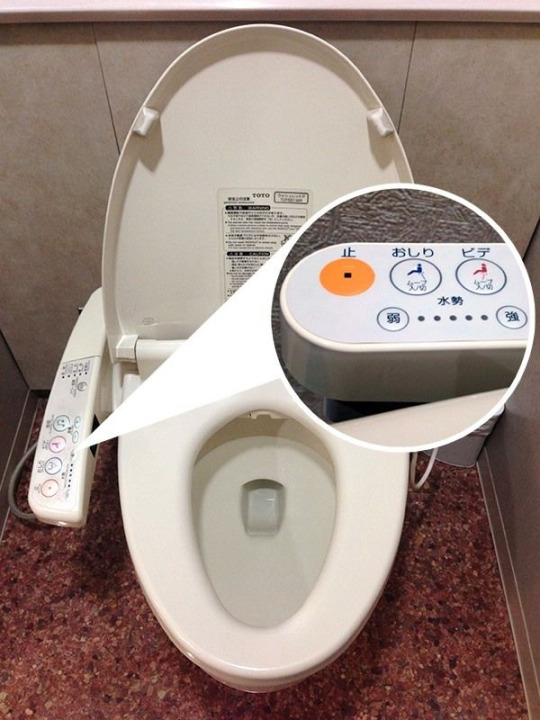

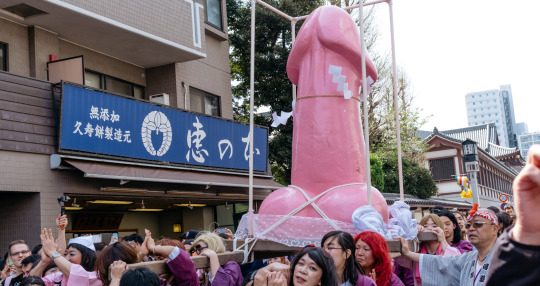

0 notes
Text
Asakusa in Reo to Mabu: Futari wa Sarazanmai
Sarazanmai and its spin-off manga Reo to Mabu: Futari wa Sarazanmai both take place in Asakusa, a district in the Taito special ward in Tokyo, Japan. Asakusa is located in the North-Eastern parts of central Tokyo, next to the Sumida River which separates it from the Sumida special ward in the East.
Asakusa is most famous for the Senso-ji Buddhist temple and for being a former entertainment district (Shinjuku took over after WWII). It’s the home of many restaurants and kitchen & food related establishments and has a more traditional Japanese atmosphere than the rest of Tokyo.
Sumida is most famous for Tokyo Sky Tree and Asahi Beer Tower. Tokyo Sky Tree is a broadcast, restaurant, and observation tower. With a height of 634 meters it’s the tallest tower (and second tallest structure) in the world. Asahi Beer Hall is one of the buildings of the Asahi Breweries headquarters. It’s famous for the huge golden structure at the top which is meant to resemble a flame, but is often jokingly referred to as a turd.
Here’s a map of Asakusa and Sumida with a focus on the temple area. I’ve marked the most notable locations that we can spot in the promotional material and manga.

Identified locations in the manga
The first panel in the first chapter of the manga features a view that’s easy to recognize thanks to the giant chef’s head on the top of the building.


The building in question is Niimi Yoshokkiten (Niimi Western-style Tableware Shop), a kitchen tool department store. It’s located at the south of Kappabashi Dogu Gai (Kappabashi Kitchenware Town); a 800 meter long shopping street with over 170 shops specializing in kitchen & tableware.
This is also the location for Reo and Mabu’s Sarakoban, the “plate/dish” neighbourhood police station that they work at. In real life the station is located on the street across the chef’s head (under the teacups, white building with blue details), but here it looks like Reo and Mabu are standing in front of their koban right under the head.


Exterior shots of the koban, like this one from chapter nine compared to google street view images confirms the placement for it. I’m not sure if it’s simply an artistic choice or if something required the change (laws, regulations, the fact that it’s a sarakoban and not a regular koban).


Here’s another panoramic view of the area from chapter seven.
We see Reo and Mabu visit Kappabashi street in chapter three, when they take part in a summer festival lottery and win a scrubbing sponge. Unfortunately the manga doesn’t show us any locations that I’m able to recognize or look up, only a couple generic looking storefronts.
In chapter two Reo and Mabu go look for Sara’s parents around the temple area and we’re shown the famous Kaminarimon Gate, Nakamise-dori Street and the Main Hall of the Senso-ji Temple.


The Kaminarimon (Thunder Gate) is the first of the two entrance gates to the Senso-ji Temple. Its main features are the large red paper lantern, a statue of the God of Thunder on the left and the God of Wind on the right.


Following Kaminarimon is Nakamise-dori (Nakamise Street) which leads up to the second gate and the temple. Nakamise-dori is 250 meters long with around 90 shops on either side selling snacks and souvenirs.


Reo and Mabu visit Nakamise-dori several times throughout the manga. It’s depicted again in chapter four when Mabu is on the search for Ningyou-yaki (Baked Doll) cakes and in chapter eight when Mabu was visiting the temple before encountering another handbag thief.


The Senso-ji Temple is an ancient Buddhist temple. It’s the oldest and most famous temple in Tokyo, built around the year 600. It’s dedicated to Kannon.
Apart from chapter two we see the Main Hall in chapter eight when Mabu visits it to pray for good health and being able to keep Sara.


In chapter eight we also get to see the second entrance gate, the Hozomon Gate, viewed from the Main Hall. Unfortunately I don’t have a picture from the right angle, but you can still easily see and recognize the different structures, like the tree large lanterns and the two waraji (straw rope) sandals on either side of it that are there to provide healthy feet and safe travels for the visitors.
Chapter six takes place entirely at the Azuma Bridge, crossing the Sumida River. The river passes through several wards and has a total of 26 bridges crossing over it. The two we are shown the most are the red Azuma Bridge and the blue Komagata Bridge.


This photo is taken in Asakusa, by the Azuma Bridge looking over at Tokyo Sky Tree and Asahi Beer Tower.
Azuma Bridge is iconic for Asakuza. It was originally built in 1774, but has been rebuilt several times over the years with the current one being from 1931. The red colour matches that of the Senso-ji Temple. It’s a popular spot for photos thanks to the great view of Tokyo Sky Tree and Asahi Beer Hall, as well as to the nearby park where cherry blossom trees bloom during spring. There’s a boat stop right next to the bridge which is popular among tourists.


Here’s Komagata Bridge viewed from Azuma Bridge. Komagata Bridge was built in 1927 to replace a ferry and it’s another popular spot for photos.


In chapter seven Reo visits the Taito City Office. It’s located about 800 meters west from the Sarakoban (and did not fit not on the first map). If you live in Japan you have to visit your local City Office to register various “life updates”, such as every time you move, when you get married, have children etc.

Here you can see where the City Office/Hall is located and refresh your memory of where some of the other major locations are.
Huge thanks to @leafpool121 for letting me use their photos. I’ve also used my own and had to turn to google for a few. Asakusa is a nice neighborhood, although it’s very busy with tourists and other visitors, it’s worth a visit if you ever get the chance to go to Tokyo. Especially now that you can follow the footsteps of Reo and Mabu!
#reo to mabu#leo to mabu#sarazanmai#leo to mabu futari wa sarazanmai#reo to mabu futari wa sarazanmai#sarazanmai nonsense#my nonsense#asakusa#japan#long post
18 notes
·
View notes
Video
Tokyo, Japan by Danny Lee Via Flickr: Kappabashi-dori
#Tokyo#Japan#Kappabashi-dori#Kitchen Town#Kappabashi#Street#City#Urban#Shops#Restaurant Trade#Plastic Display Food#Sampuru#Kappabashi Dōgugai#dishes#pots#pans#cooking utensils#stoves#tables#chairs#signs#lanterns#Pedestrian
50 notes
·
View notes
Text
日本 2019: 634 m
Auf zum Tokyo Skytree Teil 2. 2017 bin ich die Tour schon einmal gelaufen, allerdings ohne auf den Skytree zu fahren. Dieses Mal stand es fest auf dem Plan. Also machte ich mich heute Morgen auf den bekannten Weg. Zuerst die Kappabashi Kitchen Street, in der man alles rund um die Küche kaufen kann. Dann über die Nakamise Shopping Street direkt zum Senso-Ji in Asakusa. Dieser Tempel ist einfach immer einen Besuch wert. Das gesamte Areal war im Herbst schon sehr schön und jetzt mit den blühenden Kirschbäumen …

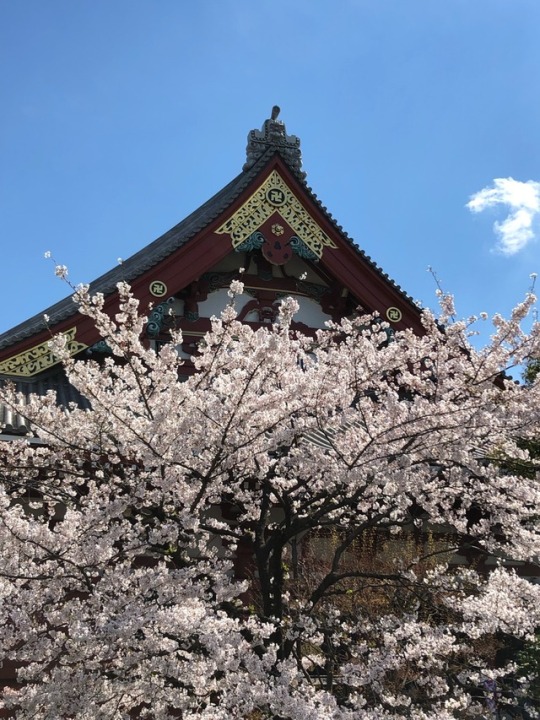

Danach ging es immer Richtung Skytree - fällt nicht schwer, das Ding ist ja groß genug, um es zu finden. Einen kleinen zusätzlichen Zwischenstopp habe ich dieses Mal im Sumida Fluss und Park gemacht, um auch hier ein paar Kirchblütenbilder aufzunehmen.
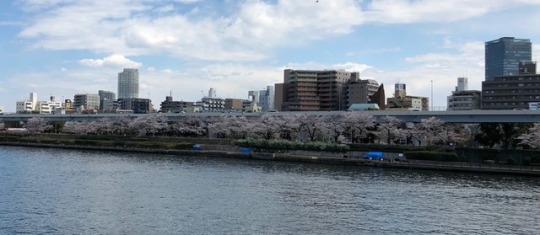

Endlich am Skytree angekommen, habe ich zuerst das Sumida Aquarium besucht. Auch hier gab es eine Sonderveranstaltung, die ganz im Zeichen der Kirschblüte stand. Mit vielen tollen Licht- und Musikinstallationen wurden die Meeresaquarien in eine wunderbar angenehme Stimmung versetzt, als würde man sich in einem Regen aus Kirschblütenblättern befinden. Generell herrscht im Aquarium eine sehr schöne Stimmung. Alles wirkt durch das Licht ruhig und entspannend. Sehr stimmig.
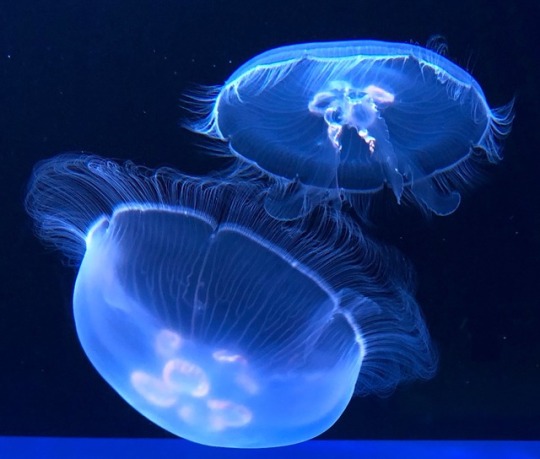

Und danach war es endlich soweit. Fast! Erst noch 45 Minuten anstehen. Dieser Moment, wenn man glaubt, das Ende der Wartezeit erreicht zu haben, weil man die Kassen sieht und dan geht es um die Ecke noch einmal in drei Reihen weiter … Ich war dennoch sehr auf den Ausblick gespannt. Ich muss gestehen, diese hohen Gebäude/Türme haben ihren Reiz, mir fehl aber der Charme. Beeindruckend ist das Ganze sicher, man kann die Region sehr weit überschauen, dennoch fehlt oftmals das Detail. Ich bin und bleibe wohl einfach ein Fan vom Tokyo Tower und freue mich schon sehr auf meinen diesjährigen Besuch.
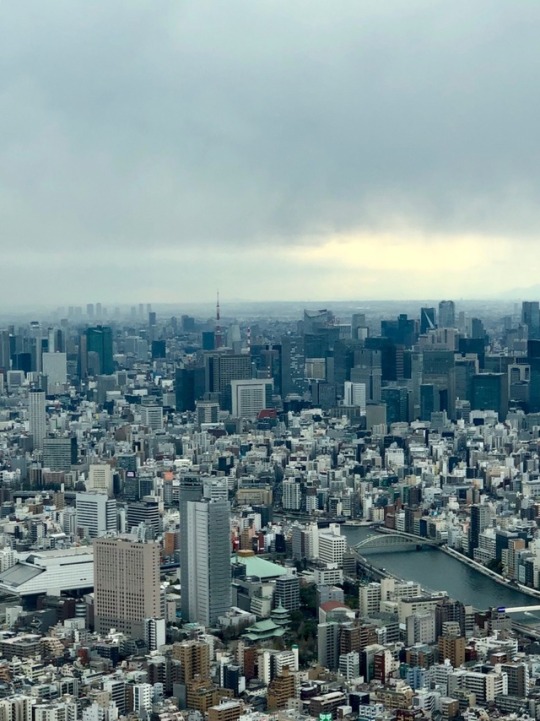
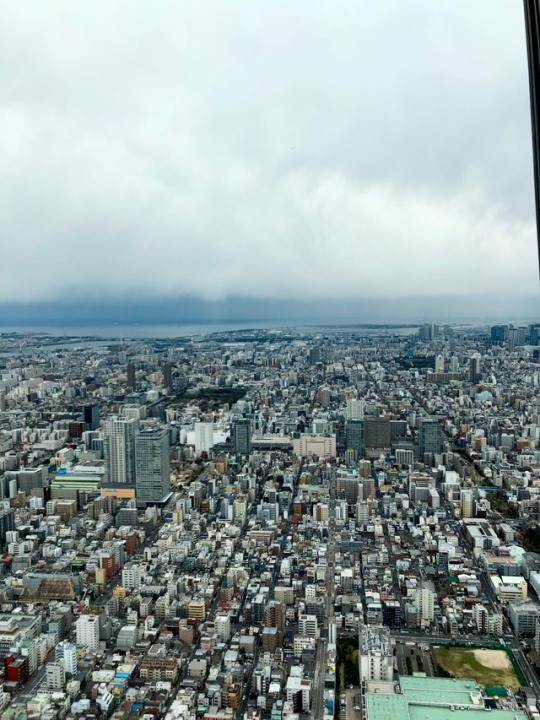
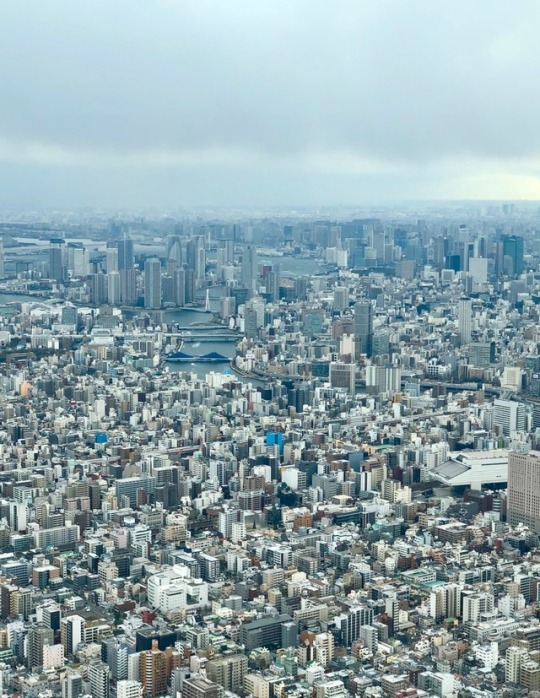
#japan#tokyo#tokyoskytree#sensoji#asakusa#asakusashrine#sumida#sumidariver#sumidakawa#sumidapark#sumidaaquarium#sakura#hanami
2 notes
·
View notes
Text
Some sort of Walk Through Tokyo's Home Knife District Kappabashi
Technically communicating Kappabashi translates to Kitchen area Town. You can come across everything from placemats for you to restaurant supplies in the securely packed streets that will make up that smaller district. HOW TO OBTAIN FOR YOU TO KAPPABASHI You'll find out once you arrive in Kappabashi as a result of the giant cook figurine peering from upon a minimal rise office creating. Sure, their a minor weird, but a part of the fun! Getting to Kappabashi, like most things in Tokyo, is usually some sort of simple subject of navigating the ultimate efficient Japanese transit method. Buy a good Japanese Knife in Tokyo Thanks in order to the Summer Olympic Activities inside 2020, Tokyo offers geared up for guests connected with all nationalities. Most transportation signs are usually in Japanese plus English, so if you're studying this blog article you should have no problem studying transit signs inside Tokyo. Tokyo is truly a city composed of 3 cities, or maybe wards, that will all have distinct titles and local consistorial devices. You would in no way be aware of it, mainly because everything combinations together so seamlessly. The Japanese are experts connected with societal conformity, and you may surely experience that fact on a regular basis in Tokyo. Kappabashi is found in the Taitō ward, which is centrally located just the bit north of the particular true town center. Make use of our inserted map to help explore Kappabashi: If you like to use Google Maps (an excellent and accurate navigation solution in Tokyo) you could follow this link to see precisely where Kappabashi will be. You can also search regarding Kappabashi Dogu Street, which will is the primary highway that makes up Cooking area Area. Depending on often the train line you are really using, either Iriya Place or maybe Asakusa Station can get a person very special to the main avenue. From either station you are going to walk for about ten minutes to arrive. UNCOVERING THE RIGHT CUTLERY SELLER Kappabashi is set upwards to be able to service the giant number of people in a hurry. You'll observe open not work distributors, outlets, and entire houses using maze-like structures plus flooring surfaces of home together with house products. But all of us are at this point for the best Japan house knives, aren't many of us? If, perhaps you don't find distracted from the other excessive quality items available for sale, likely to want to start store shopping around for knives. Mainly because there are many cutlery specialists in Kappabashi, that makes the most impression to visit stores or even stalls with chef knives in display. In most cases, if a new store carries a a number of products it isn't regarded to be a good cutlery professional, and you still might not find the best merchandise or offers. The finest strategy here is to be able to walk the length connected with Kappabashi Dogu Street, in that case make your method down each side visiting often the scaled-down side streets of which make up this district. You'll want to book about half a day to get all this specific, and wear comfortable boots and shoes! WHAT TO BE ABLE TO EXPECT WHEN BUYING The JAPANESE PEOPLE CHEF'S KNIFE IN KAPPABASHI Once you've got a feel for often the district, it's time to find serious about purchasing Japanese kitchen knives. When you visited enough retailers and stalls, likely to realize that the prices collection from inexpensive to relatively outrageous. Japanese people store proprietors in specialized businesses have their reputations extremely significantly. If something is coming in at what seems like a good lot of money, there is a reason behind that value. Japanese cooking area knife shopIf you are an beginner or perhaps home chef, you may want to keep away from anything listed above $500. These kitchen knives are functions of fine art, and can need special care and even maintenance. Foodstuff culture is elevated within Japan, and standards with regard to restaurants will be absurdly large. At this highest end associated with sushi preparation, cooks could devote thousands of dollars upon a single knife therefore that consumers see typically the good quality that stretches via planning to ingredients. All those same many chefs are most likely shopping at Kappabashi, which will means their wares are obtaining mixed in with extra customer welcoming products. Actually in the sub-$500 Japanese people cooking area knife number you will still find a variety of possibilities. In case you are interested inside a smart, best inside category solution to almost all cutting, slicing, and dicing situations, a new western model Japanese wedding party knife should be your answer. Right here you'll find very large quality solutions in the particular $100 - 300 dollar cost range. A NOTE ABOUT HAGGLING IN TOKYO For the reason that Japanese people kitchen knife manufacturers pleasure themselves on high quality, workmanship, and attention for you to detail there usually just isn't room for haggling. Often the prices set are believed honest and should be taken therefore. You don't wish to hurt typically the vendor by suggesting his / her home knives are in some way really worth less than their viewed value. The good announcement is the nerve-racking haggling process can be have missed, and you can generally trust you are not going to help be ripped off or even swindled. Extra services happen to be also accessible which includes tailor-made engraving. For those who have a non-Japanese name, this merchant can easily typically check out and publish your name around Japanese people before inscribing the idea in the blade. Placing a new seal or namesake with a Japanese knife is the traditions stemming from sword making, in which often the sword maker would position his signature in the cutting tool to take credit with regard to his work of fine art. If you are choosing a Japanese kitchen knife as some sort of gift, inscribing this recipient's name can be a good wonderful way to give a thing memorable. INCOME TAX FREE OPPORTUNITIES WHEN PURCHASING IN OKAZAKI, JAPAN Thanks in order to a great aggressive tourist plan targeting Asian holidaymakers, anyone may be able to help redeem up to 20% of your obtain after getting out the country. The vendor will be capable to tell you if you must redeem this cash at the airport or even in case the discount can be provided in the time sale. Either way, this really is an amazing deal that is only available on products made throughout Japan. Be sure to be able to take your passport, as the product owner will require to record key particulars during the checkout method to make sure you qualify with regard to the discount. He / she or even she may even basic piece a copy of the receipt using their official close in your passport. That is totally normal and area of the evidence that anyone properly get a kitchen blade in Kappabashi. SAFELY HAULING YOUR NEW JAPANESE HOUSE KNIFE HOME When you finally invest in your new Japanese kitchen knife, you'll want to make sure is actually enclosed tightly in the container for transport home. Often the merchant will be able to place and close off the knife for you. From the time of invest in, ask about any sort of unique care instructions for your personal fresh home knife. Based on the end of the steel, you may have to clean and oil the particular knife frequently to stop rust via forming. Japanese people Santoku Cutting knife Most superior quality Japanese wedding party blades come in a strong box with the company name together with warranty cards. Keep this field each as a souvenir as well as a way to deal with any potential returns as well as warranty redemptions. If an individual take care of your current cutting knife, it's not likely whatever is ever going to go wrong with it. CARING FOR YOUR JAPANESE PEOPLE KITCHEN KNIFE A new Japanese house knife will last for most lifetimes presented you take good care of it appropriately. Depending on the cutting tool and finish you decided on, you will discover different recommendations for service. Western home many chefs should look for double edged blades that looking glass the traditional look you might find with home. But the truth is don't have to stay to the same older search! For example, the Japanese Santoku knife provides a good unique shape yet is also extremely effective in everyday kitchen duties. Even though we hope you have to be able to visit, Tokyo Cutlery can be used to help a person experience the fun of shopping for and using a top quality Japoneses kitchen knife from the comfort connected with your home. And even such as a top quality Kappabashi vendor, all of the knives are decided on for their durability, beauty, plus value. Happy travels!

Want to know more about the styles in addition to types of ideal Japanese wedding party knives? Look over a Japan Kitchen Cutlery Buying Guide .
1 note
·
View note